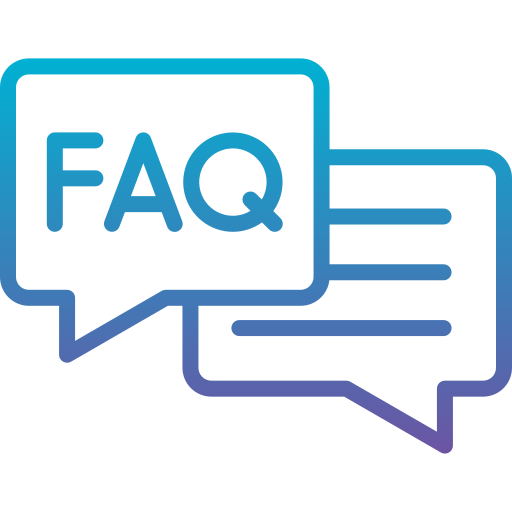Ready To Unlock Exponential Growth? We Understand The Drive To Expand And Connect With A Wider Audience. In Today's Dynamic Market, Simply Having A Great Product Is Not Enough; Effective Communication Is Paramount. To Truly Stand Out And Achieve Meaningful Impact, We Need To Leverage Powerful Tools That Bridge The Understanding Gap.
Educational Video Content Ideas Examples Offer A Strategic Advantage. These Videos Are Not Just About Showcasing Features; They Are About Educating Your Audience, Fostering Trust, And Guiding Them Towards Transformation. Join Us As We Explore 30 Compelling Educational Video Content Examples For Business Growth, Designed To Elevate Your Messaging And Drive Tangible Results.
It’s crucial to plan ahead when it comes to high-quality video production. Discuss with our team, how you can get visual style, budget, timeline in sync.
Jai Ghosh
Video Producer at Advids
Let's talk

What are core components of good educational video content ideas?
Core components of effective educational video content ideas are rooted in learner centricity. They begin with identifying specific learning gaps related to video content creation and address them with focused, actionable insights. Engaging delivery is key.
How do educational video content ideas aid business growth?
Educational video content ideas directly fuel business growth for agencies by showcasing expertise in video strategy. They attract clients seeking innovative educational video solutions, establish thought leadership, and demonstrate practical application of video for learning.
What design principles guide effective video content ideas?
Design principles for impactful educational video content ideas prioritize clarity and visual engagement tailored for learning. They emphasize intuitive navigation, digestible information chunks, and aesthetically pleasing visuals that enhance comprehension and retention of video concepts.
How should businesses approach video content production?
Agencies should approach educational video content production as a strategic service offering. They must deeply understand client learning needs, align video solutions with business objectives, and ensure high production quality to exemplify their video expertise.
Where are effective use cases for educational video content?
Effective use cases for educational video content ideas are abundant for agencies. They range from client education on video best practices to internal training on emerging video technologies. Videos can also be used for agency marketing and thought leadership in the educational video space.
What marketing strategies suit educational video content?
Marketing strategies for educational video content ideas should leverage content marketing and industry specific platforms. They can use video SEO to target searches for "educational video examples" and share insights on social media to attract clients and industry recognition.
How to create engaging educational video content?
Creating engaging educational video content ideas requires storytelling techniques applied to learning. They should use compelling narratives to illustrate video concepts, incorporate interactive elements to maintain attention, and present information in visually stimulating ways.
What makes video content concise and impactful?
Video content ideas become concise and impactful by focusing on delivering maximum learning value in minimal time. They should prioritize essential information, use efficient editing to maintain pace, and employ strong visuals to convey complex ideas quickly and effectively.
How does storytelling enhance learning video content?
Storytelling elevates learning video content ideas by making abstract concepts relatable and memorable. They can use case studies of successful educational video campaigns, create narratives around learning challenges, and employ characters to embody learner personas.
What are best practices for product focused video content?
Best practices for product focused video content ideas for agencies involve showcasing their video creation process and expertise. They should demonstrate how their services solve client educational video needs, highlight successful projects, and build trust through transparent communication.
How concept videos enhance understanding of complex topics
concept videos truly revolutionize how we grasp challenging subjects. Let's face it, wrestling with intricate ideas through dense text can feel like climbing a mountain. But imagine if someone offered you a helicopter ride instead? That's what concept videos do for learning. They lift us above the complexity, offering a clear visual overview that text simply can't match. This visual power transforms abstract concepts into something tangible and relatable.
- Our brains are wired for visuals. Think about it, you instantly understand a map far quicker than written directions. An educational demo video showing a process in action leverages this natural advantage, making learning intuitive.
- complex ideas become clear pictures. Ever tried explaining quantum physics with just words? Good luck! But a well-crafted educational story video using animation can visualize these mind-bending concepts, making the invisible almost visible.
- Multi-sensory learning sticks. It's not just seeing, it's hearing too. This combination in a short educational video creates a richer, more memorable learning experience, boosting retention and engagement.
- Stories build bridges to understanding. Even the driest subject matter springs to life when woven into a narrative. An educational product video can showcase features within a compelling story, making even technical details engaging and relevant.
Ultimately concept videos are more than just watching; they are about truly *seeing* understanding unfold. They bridge the gap between complex information and clear comprehension, making learning not just easier, but genuinely exciting.
Best practices for skill demonstration video creation
Building upon our understanding of impactful educational content, lets now focus on skill demonstration videos. These videos are unique, they need to not just inform but also visually guide viewers through a process, enabling them to learn by seeing and doing. Creating effective skill demonstration videos requires a slightly different approach, one that prioritizes clarity, visual cues, and actionable steps .
To truly excel, remember these key practices.
- Start with crystal clear learning objectives . Before you even think about filming, define exactly what skills viewers should grasp. This focus ensures your educational explainer video stays targeted and avoids overwhelming learners.
- Showcase real world skill applications. Abstract skills become tangible when viewers see them in action. Demonstrate how these skills solve problems or achieve goals in practical scenarios, making learning relevant and engaging.
- Break down complexity into digestible steps . No one learns a complex skill in one go. Divide the skill into smaller, manageable steps, each clearly demonstrated and explained. This step by step approach is crucial for an animated educational video or live action.
- Use visuals to guide every step. Skill demonstration is inherently visual. Employ screen recordings, close up shots, and graphics to illustrate each step. Think from an educational customer video perspective – what visual cues would make the process easiest to follow?
In essence, crafting compelling skill demonstration videos is about making learning visual and actionable. By focusing on clear objectives, real world relevance, step by step guidance, and strong visuals, we can create educational animated video content that truly empowers viewers to learn and apply new skills effectively.
What level of depth should tutorial videos aim for
Deciding how deep to go in tutorial videos is a crucial balance. We want to empower viewers with enough information to succeed, but overwhelming them with excessive detail can backfire. The sweet spot lies in providing sufficient depth to be genuinely helpful, without losing viewers attention or making the learning process feel daunting. Finding this balance is key to creating effective educational content.
So, how do we strike this balance? Let's consider a few key aspects.
- Start by understanding your audience's existing knowledge. Are they beginners needing foundational concepts, or are they more experienced users looking for advanced techniques? Tailoring the depth to their level is paramount. A short educational video idea might be perfect for beginners, while experienced users might appreciate more in-depth explorations.
- Focus on the core functionalities first. Introduce the essential features and workflows before diving into niche cases or advanced customizations. Think about showcasing a specific educational demo video idea that clearly illustrates a core function, keeping initial tutorials focused and digestible.
- Use a layered approach to information. Begin with a high-level overview, then offer opportunities to delve deeper for those who want more. This could involve creating a series of educational demo video ideas, each building upon the previous one, or providing links to more detailed resources for viewers seeking advanced knowledge.
Ultimately, the right depth is about empowering viewers to achieve their goals efficiently. By carefully considering audience knowledge, prioritizing core features, and layering information, we can create tutorial videos that are both informative and engaging .
Key elements of effective instructional video design
Building upon our earlier exploration of educational video content ideas, let us now focus on the key elements that make instructional videos truly effective . It is not just about conveying information; it is about designing an experience that facilitates learning and engagement. Thinking about short educational video ideas, we realize that every second counts.
So, what are some crucial aspects to consider?
- Start with crystal clear learning objectives. Before even thinking about visuals or scripts, define exactly what viewers should know or be able to do after watching. This clarity anchors your entire video.
- Structure your content like a story. Even instructional content benefits from a narrative arc . Think beginning, middle, and end. A logical flow keeps viewers engaged and aids comprehension. When considering educational story video ideas, remember that narrative power.
- visual consistency is key. Maintain a unified visual style throughout your video. This includes color palettes, fonts, and animation styles. Consistency makes your video look professional and less distracting.
- Visuals must serve a purpose. Every visual element should directly support your learning objectives. Avoid decorative elements that do not contribute to understanding. For an educational demo video sample, notice how visuals directly showcase the product features.
- Think interactive. Where possible, incorporate interactive elements . Quizzes, polls, or clickable annotations can significantly boost viewer engagement and knowledge retention.
- Conciseness is your friend. Respect your viewers time. Keep videos focused and to the point. Edit ruthlessly to remove any unnecessary information.
- Adopt a conversational tone . Speak directly to your viewers as if you are guiding them personally. An encouraging and friendly tone makes learning more approachable.
- Audio clarity is non-negotiable. Ensure your audio is crisp, clear, and free from background noise. Poor audio is a major distraction and hinders learning.
- mobile-first mindset . Many viewers will watch on mobile devices. Optimize your video for smaller screens, ensuring text and visuals are still easily legible.
- Representation matters. Strive for diverse representation in your visuals and examples. Inclusivity makes your content relatable to a wider audience .
- Captions for accessibility. Always include captions. They make your videos accessible to viewers with hearing impairments and also benefit those watching in noisy environments.
- Real-world relevance. Connect concepts to real-world examples and case studies . This makes the learning more practical and memorable.
- Animation for clarity. Do not shy away from animation to explain complex processes or abstract concepts. Animation can simplify the seemingly complicated.
- Pause for reflection. Strategically incorporate short pauses to allow viewers time to process information or take notes.
- End with a clear summary and next steps. Reinforce key takeaways with a brief summary and guide viewers on what to do next, whether it is further reading or trying out a new skill. Consider an educational demo video example ending with a strong call to action.
By focusing on these design elements, we can create instructional videos that are not only informative but also engaging and effective learning tools.
Crafting compelling online course video modules
Building upon power educational videos lets focus crafting compelling video modules online courses . Moving beyond simple educational product video idea, online course modules offer deeper dive structured learning experience. Creating effective modules requires strategic approach learning going beyond simple product showcases.
Online courses video modules need facilitate deeper understanding skill development. Think each lesson expanded short educational video sample, carefully designed build upon previous one. Consider key elements make course videos truly impactful.
- Start each module clearly defined learning objectives learners know expect.
- Break complex topics short digestible video lessons maintain focus.
- Incorporate educational story video sample showcasing real world applications illustrate concepts narratives.
- Supplement theoretical concepts educational demo video samples guide learners practical application.
Focusing structured learning actionable content online course video modules become powerful tools knowledge transfer skill development.
Exploring digital education content video formats
Exploring digital education content video formats is like navigating a diverse landscape. We've already seen how impactful educational videos can be, but the *how* is just as crucial as the *why*. Choosing the right format isn't about picking the trendiest option; it's about strategically aligning format with your learning goals and audience needs.
Think about what you want to achieve. Need to quickly convey a core concept? A Short Educational Video Example might be perfect for grabbing attention and delivering key takeaways fast. Want to build deeper understanding or emotional resonance? An Educational Story Video Example can weave narratives that captivate and connect on a personal level.
- For practical skills, Educational Demo Video Examples offer invaluable hands-on guidance, showing viewers exactly how something is done.
- When tackling complex or abstract ideas, consider an Educational Animated Video Idea to simplify concepts visually and make them more digestible.
- Blending formats can also create richer learning experiences, combining animation with live action or demos with storytelling.
- Emerging formats like interactive videos and even VR/AR are pushing boundaries, offering immersive and engaging learning environments.
Ultimately, the most effective digital education leverages format diversity. By thoughtfully selecting and combining formats, we can create video content that truly resonates, educates, and empowers learners in varied and impactful ways.
How to boost student engagement with video lessons
How can we truly make video lessons captivating for students? It's about moving beyond simply recording lectures and embracing strategies that actively involve learners. Let's explore some key approaches to boost student engagement and transform video lessons into dynamic learning experiences.
To begin, consider making your videos interactive.
- Incorporate quizzes and polls directly within the video. This is a fantastic way to check for understanding in real-time and keep students actively thinking.
- Encourage discussions around the video content. Forums and comment sections can become vibrant spaces for peer learning and deeper exploration of topics.
- Personalize the learning experience. Whenever possible, use student names in examples or tailor content to their specific interests to build a stronger connection.
- Offer varied content formats. Don't just stick to one style. Think about using short educational video samples alongside longer lessons to cater to different attention spans and learning preferences.
Beyond interactivity, the content itself needs to be engaging. Use storytelling and relatable scenarios to make abstract concepts come alive. Think about integrating diverse formats like an animated educational video idea to explain complex topics visually. Remember, concise is often better. Focus on a single learning objective per video to prevent overwhelm and improve retention. By implementing these strategies, we can create educational product video ideas that truly resonate with students and foster a more active and effective learning environment. This approach moves us closer to creating impactful educational customer video idea experiences in the classroom.
Strategies for creating truly engaging learning videos
Building upon our exploration of effective educational video content ideas, let us now focus on strategies that truly make learning videos engaging. We know stories resonate deeply, and considering educational story video samples highlights the power of narrative. Creating videos that not only inform but also captivate is the key to successful knowledge transfer.
To achieve this heightened engagement, several key strategies come into play. Every successful learning video starts with a strong educational explainer video idea, but it is the execution that truly elevates it. In today's world where attention is fleeting, short educational video examples often prove most impactful, respecting viewers time while delivering maximum value.
- Compelling Hooks: Begin videos with intriguing questions, surprising statistics, or captivating visuals to grab attention instantly and set the stage for learning.
- Visual Storytelling: Transform complex information into visually digestible narratives. Use animations, graphics, and real-world imagery to illustrate concepts and make them memorable.
- Interactive Elements: Incorporate quizzes, polls, or clickable annotations to actively involve viewers in the learning process, boosting retention and making it a dynamic experience.
- Concise Delivery: Respect viewers time by keeping videos focused and to the point. Edit ruthlessly to eliminate unnecessary information and maintain a brisk pace.
By implementing these strategies, we can transform our educational video content ideas from simply informative to genuinely engaging, ensuring viewers not only learn but also enjoy the process.
Designing effective video tutorials for diverse learners
Designing effective video tutorials for diverse learners is about recognizing that everyone learns differently. To truly connect, we need to move beyond a one-size-fits-all approach and embrace varied learning styles. This means crafting tutorials that are not just informative, but also inherently accessible and engaging for a wide spectrum of individuals. Think about how we can make learning resonate on a personal level, no matter the background or learning preference.
To make tutorials truly inclusive, consider these key strategies. Exploring different formats, like educational animated video ideas, broadens appeal and caters to visual learners. For complex topics, animated educational video ideas can simplify explanations through visual storytelling. Beyond tutorials, consider educational customer video ideas to showcase real-world impact and build trust. An educational product video sample should demonstrate accessibility features clearly, ensuring usability for everyone.
- Incorporate multi-sensory elements engaging sight, sound, and even touch points where possible.
- Offer adjustable playback speeds and controls empowering learners to manage their pace.
- Provide transcripts and closed captions as standard, ensuring accessibility for all.
- Break down information into smaller, digestible modules preventing cognitive overload.
By implementing these inclusive design principles, we create tutorials that are not only effective but also respectful of diverse learning needs. This approach ensures our educational content reaches and empowers the widest possible audience, fostering a more inclusive learning environment.
Benefits of animated video in educational settings
Having explored the power of educational video content ideas, let us zoom in on animation, a truly transformative approach for learning. We know visuals resonate, but animation takes engagement to another level in educational settings. Think about it, complex ideas become clear, abstract concepts turn tangible, and learning transforms from passive listening to active participation. This is the magic of animation in education.
- Captivating Visuals An educational animated video sample immediately grabs attention, making learning inherently more engaging and less of a chore.
- Simplified Complexity Need to explain a tricky scientific process or a complex historical event? Educational explainer video ideas using animation excel at breaking down information into digestible visuals.
- Lasting Impact Remembering facts is easier when they are tied to visuals. Animation enhances memory retention, ensuring concepts stick long after the video ends.
- Creative Storytelling Animation opens doors to imaginative narratives. Imagine an animated educational video sample bringing history to life or demonstrating abstract math principles through a story.
Consider an educational product video example showcasing a learning tool or platform using animation. The possibilities are vast. Animation is not just visually appealing; it is a powerful tool that enhances understanding, boosts engagement, and makes learning a truly enriching experience for everyone involved.
Author & Editor Bio
A video producer with a passion for creating compelling video narratives, Jai Ghosh brings a wealth of experience to his role. His background in Digital Journalism and over 11 years of freelance media consulting inform his approach to video production. For the past 7 years, he has been a vital part of the Advids team, honing his expertise in video content planning, creation, and strategy.
His collaborative approach ensures that he works closely with clients, from startups to enterprises, to understand their communication goals and deliver impactful video solutions. He thrives on transforming ideas into engaging videos, whether it's a product demo, an educational explainer, or a brand story.
An avid reader of modern marketing literature, he keeps his knowledge current. Among his favorite reads from 2024 are "Balls Out Marketing" by Peter Roesler, "Give to Grow" by Mo Bunnell and "For the Culture" by Marcus Collins. His results-driven approach ensures that video content resonates with audiences and helps businesses flourish.




